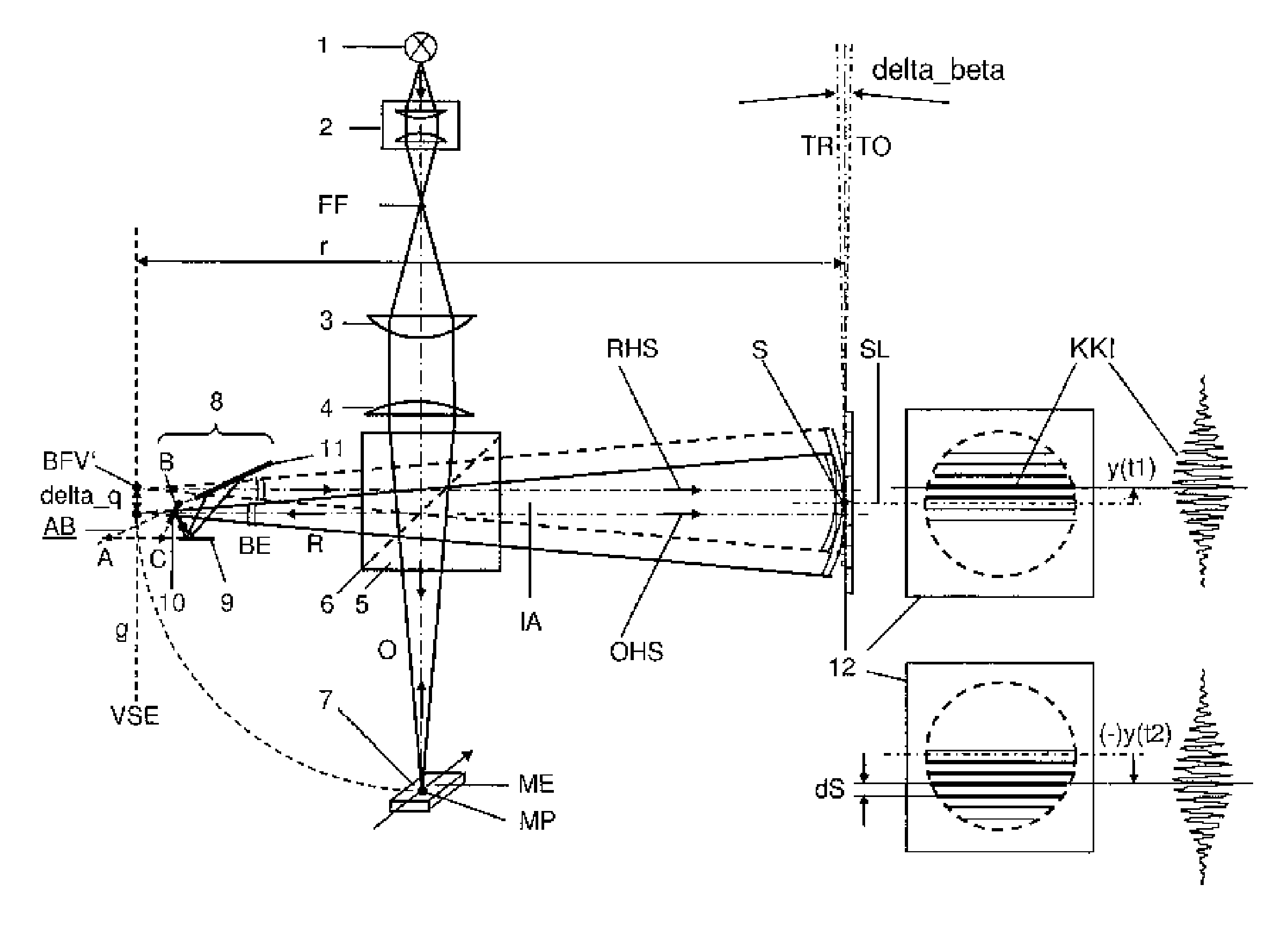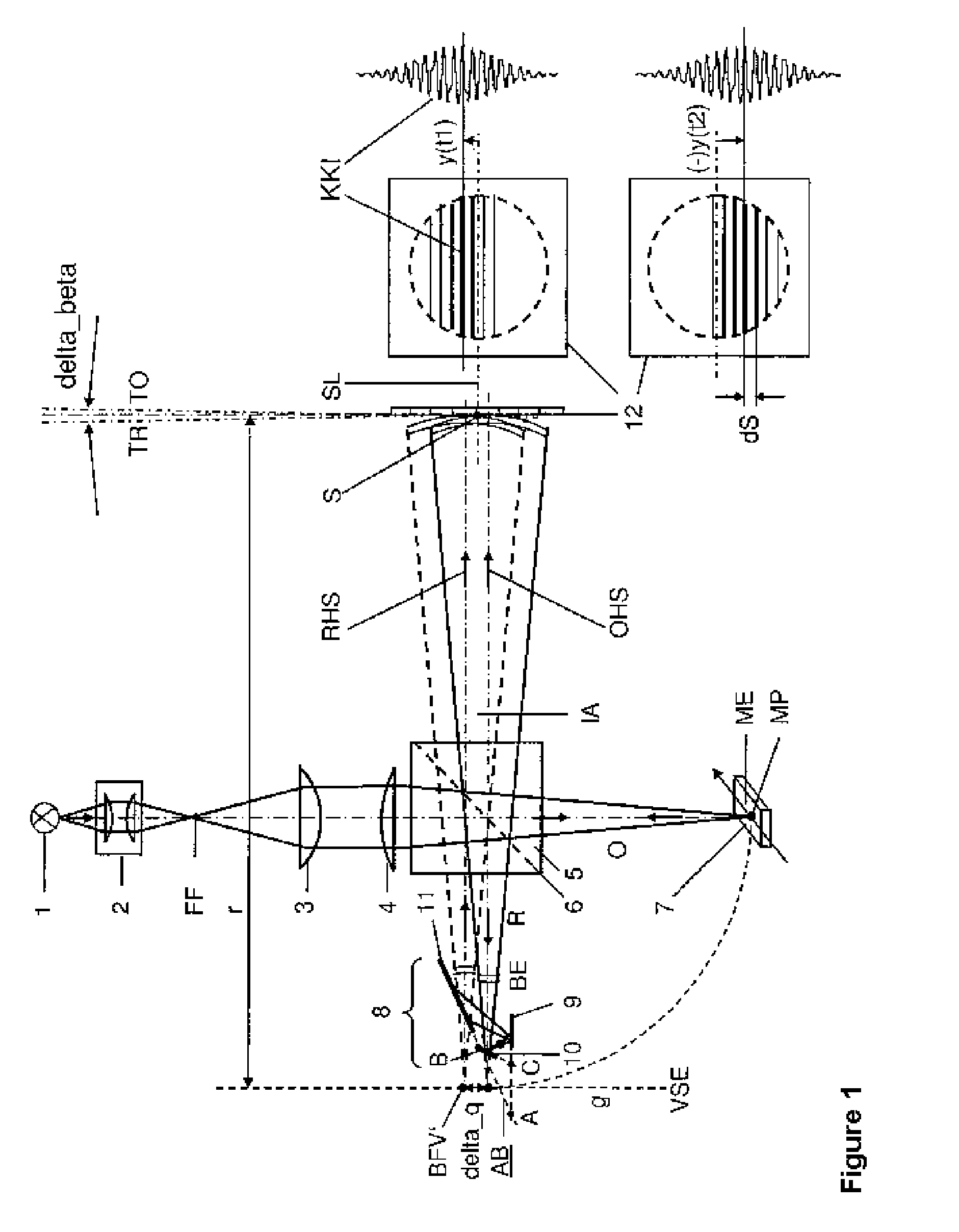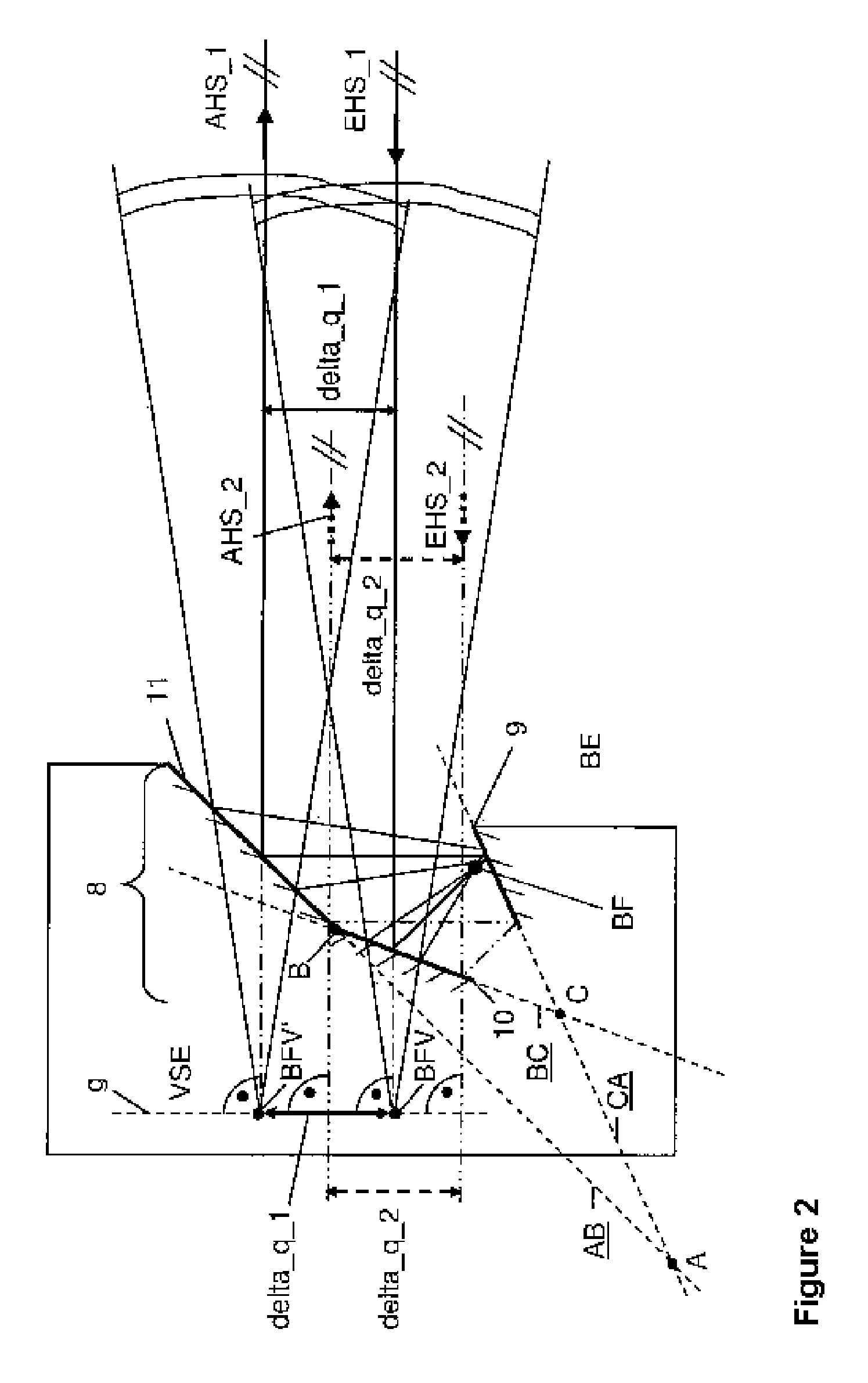Method and arrangement for robust interferometry for detecting a feature of an object
a technology of robust interferometry and object, which is applied in the direction of interferometers, measurement devices, instruments, etc., can solve the problems of inability to detect features of objects, and inability to exhibit long-term stability of interferometers, etc., to achieve numerically determined comparatively accurately, increase the depth measurement range, and increase the coherence length
- Summary
- Abstract
- Description
- Claims
- Application Information
AI Technical Summary
Benefits of technology
Problems solved by technology
Method used
Image
Examples
Embodiment Construction
[0237]The term light is always used herein as a synonym for electromagnetic radiation from the terahertz through infrared to deep UV spectrum.
[0238]FIG. 1 shows a sensor on the basis of a Michelson interferometer. The light from a spectrally comparatively broadband light source 1 in the near infrared range is brought to a small focal spot FF by means of a beam shaping optical system 2, it also being possible to arrange a pinhole here, is collimated by a lens 3 and is focused again by a comparatively small-aperture focusing lens 4 having a numerical aperture of 0.05 and subsequently passes into a Michelson-type interferometer comprising a beam splitter 5 and a beam splitter surface 6, where the light is split into a reference beam R and an object beam O. The object light beam O passing rectilinearly through the beam splitter 5 impinges on the reflective object surface of the object 7 in a manner focused at the measurement point MP, said surface being situated here almost in the measu...
PUM
 Login to View More
Login to View More Abstract
Description
Claims
Application Information
 Login to View More
Login to View More - R&D
- Intellectual Property
- Life Sciences
- Materials
- Tech Scout
- Unparalleled Data Quality
- Higher Quality Content
- 60% Fewer Hallucinations
Browse by: Latest US Patents, China's latest patents, Technical Efficacy Thesaurus, Application Domain, Technology Topic, Popular Technical Reports.
© 2025 PatSnap. All rights reserved.Legal|Privacy policy|Modern Slavery Act Transparency Statement|Sitemap|About US| Contact US: help@patsnap.com



